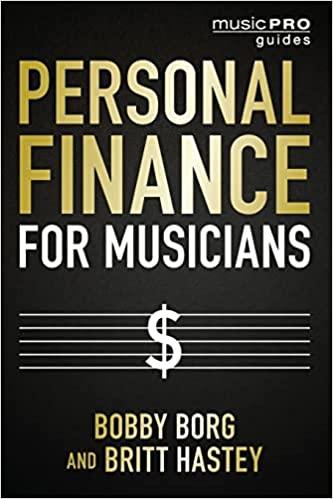
Question 3 (high-frequency trading (HFT) arms-race). This lengthy question is related to the discussion about HFTs in lecture 14. The goal is to better understand why the investment into hardware and infrastructure by HFTs to "undercut" each other can be socially wasteful. You want to make sure you understand how trading on limit order book works before attempting this question. Suppose there is one security being traded on an exchange where trading operates via a limit order book. The exchange opens at 9 am every day and closes at 4pm. There is no uncertainty about the value of the security: each share is worth $10.5. Suppose there are two HFTs, 1 and 2, who compete by submitting limit orders. Other traders, collectively, submit one market order for one share every minute. Each market order buys or sells with equal probability. 3 The goal of HFTs is to maximize expected profits. HFT profit calculation goes as follows: if my limit buy order of Q shares at a price $P is traded (met by a market sell order), my profit (possibly negative) is Q$(10.5P).4 Symmetrically, If my limit sell order of Q shares at a price $P traded, then my profit (possibly negative) is Q$(P10.5), The exchange rule says that the minimum tick size is $1, so limit orders can only be submitted at integer prices ($8,$9,$10,$11,). When market orders arrive, the execution of limit orders follows the "price-time priority" principle. 5 (a) (1 point) Out of all possible prices, what is the lowest price at which HFTs are willing to sell (so that they will not suffer losses when trading)? What is the highest price at which HFTs are willing to buy? (b) ( 1 point) Let's start thinking about how HFTs compete with each other. Suppose that the current limit order book only has limits orders already submitted by HFT 1: limit buy orders of 1,000,000 shares at the price of $9 and limit sell orders of 1,000,000 shares at a price of $12. Now it is HFT 2 's opportunity to submit limit orders. To make profits, at what prices should HFT 2 submit limit buy and sell orders? Hint: what would happen if HFT 2 submits limit orders at the same prices (\$9 and \$12)? Well, HFT 1's orders will take priority due to earlier submission. Further, because HFT 1's orders are larger and won't be depleted any time soon (1,000,000 shares!), for all practical purposes, submitting at the same price means that HFT 2's orders won't get a chance to be executed. Question 3 (high-frequency trading (HFT) arms-race). This lengthy question is related to the discussion about HFTs in lecture 14. The goal is to better understand why the investment into hardware and infrastructure by HFTs to "undercut" each other can be socially wasteful. You want to make sure you understand how trading on limit order book works before attempting this question. Suppose there is one security being traded on an exchange where trading operates via a limit order book. The exchange opens at 9 am every day and closes at 4pm. There is no uncertainty about the value of the security: each share is worth $10.5. Suppose there are two HFTs, 1 and 2, who compete by submitting limit orders. Other traders, collectively, submit one market order for one share every minute. Each market order buys or sells with equal probability. 3 The goal of HFTs is to maximize expected profits. HFT profit calculation goes as follows: if my limit buy order of Q shares at a price $P is traded (met by a market sell order), my profit (possibly negative) is Q$(10.5P).4 Symmetrically, If my limit sell order of Q shares at a price $P traded, then my profit (possibly negative) is Q$(P10.5), The exchange rule says that the minimum tick size is $1, so limit orders can only be submitted at integer prices ($8,$9,$10,$11,). When market orders arrive, the execution of limit orders follows the "price-time priority" principle. 5 (a) (1 point) Out of all possible prices, what is the lowest price at which HFTs are willing to sell (so that they will not suffer losses when trading)? What is the highest price at which HFTs are willing to buy? (b) ( 1 point) Let's start thinking about how HFTs compete with each other. Suppose that the current limit order book only has limits orders already submitted by HFT 1: limit buy orders of 1,000,000 shares at the price of $9 and limit sell orders of 1,000,000 shares at a price of $12. Now it is HFT 2 's opportunity to submit limit orders. To make profits, at what prices should HFT 2 submit limit buy and sell orders? Hint: what would happen if HFT 2 submits limit orders at the same prices (\$9 and \$12)? Well, HFT 1's orders will take priority due to earlier submission. Further, because HFT 1's orders are larger and won't be depleted any time soon (1,000,000 shares!), for all practical purposes, submitting at the same price means that HFT 2's orders won't get a chance to be executed







